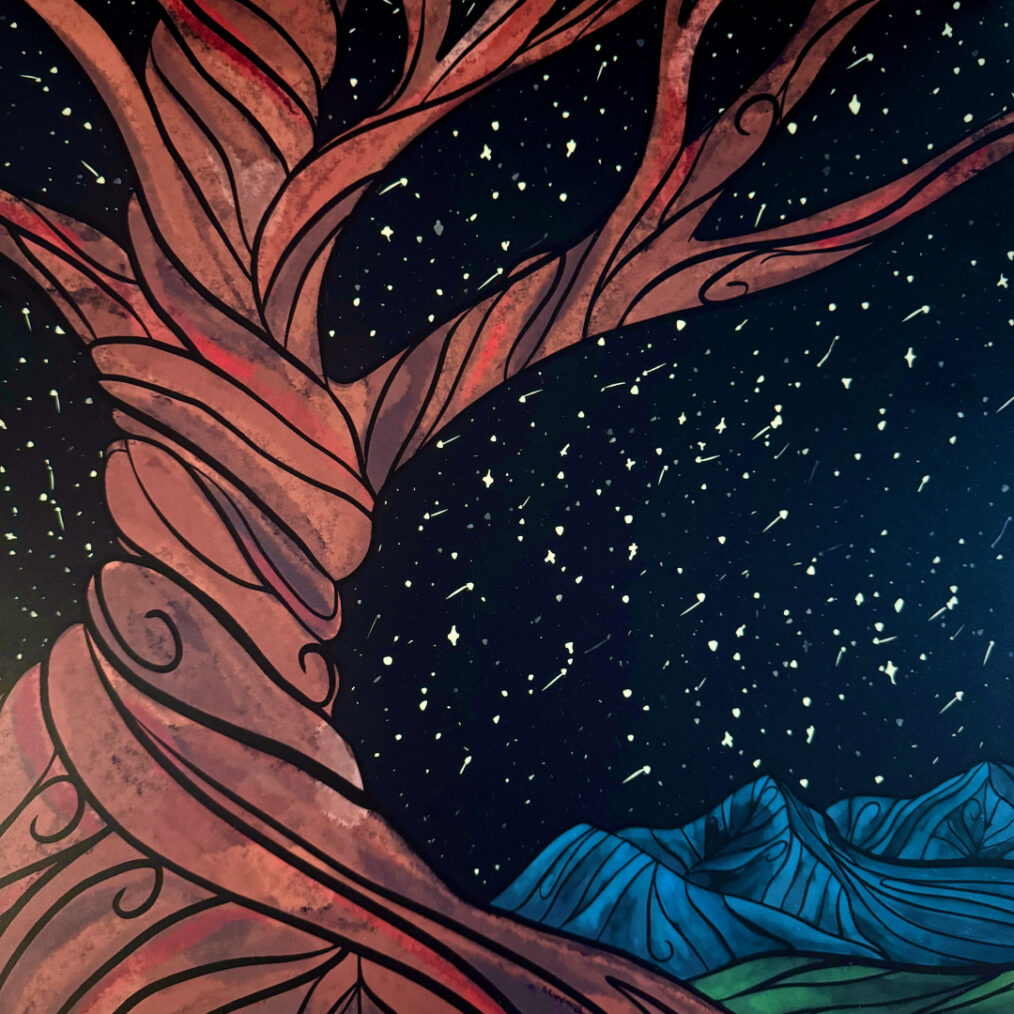Learn more about Christ in the Psalms weekly artwork and see previous pieces here.
Person: LouAnn Summers
I’m a believer in Jesus, and only by His power am walking in His way, the way of life! I am a wife of 44+ years, have four children and nine grandchildren. I feel God‘s joy when I am creating❣
Piece: Acrylic
This piece is based on Psalm 140. In this psalm, David talks about evil men, men of violence, who make plans to trip up his feet. My thought process brought me to 1 Peter 5:8. I was reminded that our true enemy who is planning to trip us up and devour us is the devil. I thought of the myriad of ways that we get tripped up in our lives. So I used these thoughts to make a wicked net, or a snare Satan often uses to trip up our feet. These are just a few ways we can get snagged on our journey.
It might be easier for you if I list them here instead of you having to read them off of the picture…
Pride, sexual immorality, unforgiveness, fear, shame, addictions, comparison, anger, love of money, distrust, worry, vain regret, complaining, envy, jealousy, unthankfulness, conceit, hopelessness, despair, deceit, lies, denial, taking offense, blaming, isolation, false identity, worthlessness, old wounds, greed, bitterness, gossip, control, idolatry, disqualification, worry, perfectionism, religion, violence, a slanderous, tongue, malice, bad habits, pettiness, desires of the flesh, autonomy, personal history, hatred, cares of life, shallowness, backbiting, vanity, circumstances, negativity, self indulgence, self justification, self gratification, self victimization, self protection, self-pity, self improvement, self-help, self-centeredness, self absorption, selfish ambition… to name a few.
Praise our merciful Lord that we have been delivered from these deathly traps!








